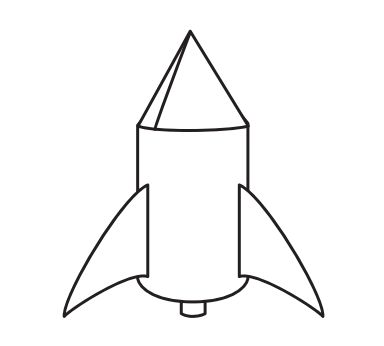In this activity, students use pop bottle rockets to learn about Newton’s Third Law of Motion and how changing the action force results in a dramatic reaction.
2L pop bottle rockets are an excellent way to demonstrate the effects of forces on objects and provide many opportunities for observing, predicting, measuring and carrying out experiments while controlling for variables.
Part I of this series of activities demonstrates how a pop bottle rocket works.
You can do this activity on its own, or follow it up with Part II and/or Part III of this series for a deeper investigation into forces and rocket flight.
How a pop bottle rocket works
A launcher powered by a hand bicycle pump or small compressor fills a plastic pop bottle rocket with compressed air. When the bottle is released from the launcher, air escapes the bottle. As the bottle pushes out the air, the air pushes the bottle upwards (Newton’s Third Law of Motion).
Increasing the thrust (adding more pressure to the bottle) increases the acceleration. This is an illustration of Newton’s Second Law (a bigger force causes a bigger acceleration). We see the bigger acceleration as a higher flight.
Safety Tips:
Flying bottle rockets is a lot of fun, but be sure to take safety precautions seriously:
- Rockets travel far; do not do this activity indoors.
- Every launcher should be supervised by an adult.
- Do not pressurize the rocket past 40 psi (pounds per square inch).
- When pressurizing and launching the rocket, everyone should stand well away from the launcher. Make sure that all observers know that a rocket is about to be launched–a countdown and safety zone combination work well for this.
- Watch the rocket’s entire flight to make sure it doesn’t hit anyone as it falls.
- Use only paper/cardboard fins, never metal.
- Wear eye protection.
